📞+86 153 7530 2641 📧 hongjing.Wang@feichuncables.com

Type 12YRDT11YH Reeling PUR Rubber Cable for Port Random Winding and Monospiral Reels – Up to 80 m/min Travel Speed
Discover how Type 12YRDT11YH PUR rubber reeling cable delivers high performance for port crane random winding and monospiral reels. Designed for travel speeds up to 80 m/min with superior oil, abrasion, and UV resistance. Ideal for Australian port environments.
hongjing.Wang@Feichun
7/22/20258 min read
Introduction: Why Reeling Cables Matter in Port Operations
Australia's bustling ports handle millions of tonnes of cargo annually, relying heavily on sophisticated machinery that demands reliable electrical connections. Port crane cable systems form the backbone of these operations, powering everything from ship-to-shore cranes to container spreaders and mobile harbour equipment. The success of these reeling systems depends entirely on selecting cables that can withstand the unique challenges of marine environments whilst maintaining consistent performance under constant motion.
The choice between random winding reel and monospiral reeling system configurations significantly impacts cable performance and longevity. Random winding reels offer compact storage but place additional stress on cables through varying bend radii, whilst monospiral systems provide more controlled movement patterns. Understanding these differences is crucial for port operators seeking optimal cable solutions.
The Type 12YRDT11YH cable represents a purpose-built solution for both reeling configurations, engineered specifically for the demanding requirements of cable for port applications. This robust reeling cable for random winding reel systems and monospiral reeling system in port cranes delivers exceptional performance across Australia's diverse port environments, from the tropical conditions of Darwin to the temperate climate of Melbourne.
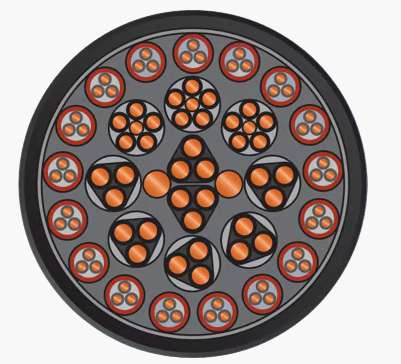

Technical Overview of Type 12YRDT11YH Cable
The Type 12YRDT11YH specifications showcase advanced engineering tailored for industrial reeling applications. Operating at a voltage rating of 0.6/1kV, this cable meets the power requirements of most port machinery whilst maintaining safety margins critical for continuous operation. The designation "12YRDT11YH" follows international naming conventions, with each component indicating specific design characteristics optimised for reeling service.
The core construction features flexible copper conductors designed to minimise fatigue during continuous flexing cycles. These conductors utilise fine wire stranding that provides superior flexibility compared to standard power cables. The insulation comprises ethylene propylene rubber (EPR), selected for its excellent electrical properties and resistance to ozone cracking—a common issue in marine environments with salt spray exposure.
The standout feature of this PUR rubber cable is its polyurethane (PUR) outer sheath, which delivers exceptional mechanical properties essential for reeling applications. Unlike traditional PVC or rubber compounds, PUR maintains flexibility across extreme temperature ranges whilst providing superior resistance to abrasion, cuts, and impact damage. This makes it an ideal abrasion-resistant reeling cable for harsh port conditions.
Chemical resistance is another critical advantage of the PUR sheath material. Port environments expose cables to hydraulic oils, diesel fuel, saltwater, and various cleaning chemicals. The Type 12YRDT11YH demonstrates excellent resistance to these substances, ensuring consistent performance without premature degradation. Additionally, the material's inherent UV stability prevents deterioration from constant sun exposure, a significant advantage for outdoor port installations.
Performance Features in Random Winding and Monospiral Reels
The distinction between random winding reel cable and monospiral reel cable applications requires specific performance characteristics that the Type 12YRDT11YH addresses comprehensively. Random winding systems subject cables to varying bend radii and potential crossing points, creating complex stress patterns that standard cables cannot withstand. This cable's construction incorporates reinforcement elements that distribute mechanical loads evenly, preventing premature failure at stress concentration points.
Monospiral reel systems, whilst providing more predictable movement patterns, require cables capable of maintaining consistent electrical properties throughout extended reeling cycles. The Type 12YRDT11YH's optimised conductor arrangement and insulation system ensure minimal impedance variation during coiling and uncoiling operations, critical for sensitive control circuits and power transmission.
The cable's performance envelope extends to travel speeds up to 80 m/min, making it suitable for high-speed reeling cable applications found in modern port automation systems. This capability stems from careful attention to dynamic stress distribution and heat dissipation characteristics. The PUR sheath's low friction coefficient reduces heat generation during high-speed reeling, whilst the conductor arrangement minimises internal heating from electrical losses.
Torsional resistance represents another crucial performance parameter for port reel cable up to 80 m/min applications. The Type 12YRDT11YH incorporates design elements that accommodate twisting forces without compromising electrical integrity or mechanical strength. This torsion-resistant rubber cable design ensures reliable operation even when subjected to complex movement patterns common in three-dimensional crane operations.
Drag chain compatibility extends the cable's application range beyond traditional reel systems. Port facilities increasingly utilise hybrid power delivery systems combining reels with drag chain segments for complex machinery paths. The Type 12YRDT11YH's robust construction adapts to these mixed applications whilst maintaining consistent performance characteristics.
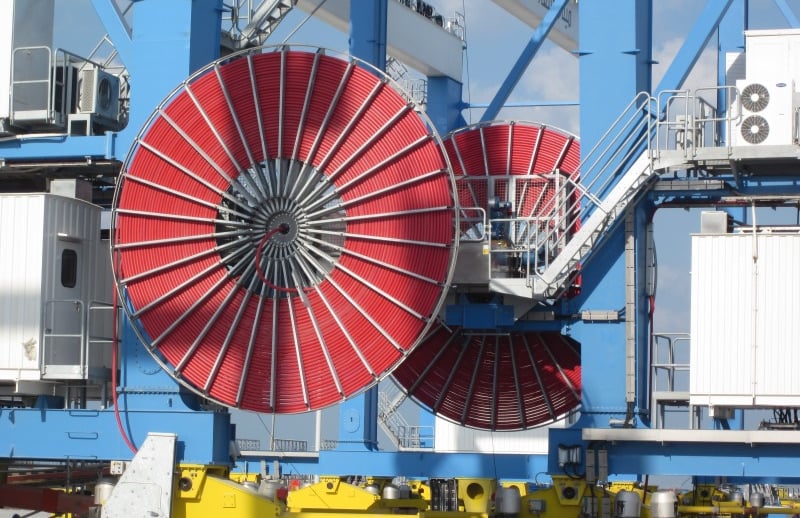

Application Scenarios in Ports
Australian ports showcase diverse applications where reeling cable for port cranes Australia demonstrates its versatility and reliability. Ship-to-shore cranes represent the most demanding application, requiring cables that can handle high current loads whilst enduring constant motion cycles. These massive structures utilise both power and control cables in reeling systems, with the Type 12YRDT11YH serving both functions effectively.
The cable's suitability for mobile harbour cranes addresses the growing trend toward flexible port equipment. These cranes require compliant cable for mobile harbor cranes that can withstand both reeling stresses and the additional challenges of equipment mobility. The Type 12YRDT11YH's robust construction provides the durability needed for these dual-stress applications.
Rubber-tyred gantry (RTG) cranes present unique challenges combining reeling systems with frequent positioning changes. The cable must maintain performance through both vertical reeling cycles and horizontal movements as the RTG travels between container rows. Container handling systems, including automated guided vehicles and stacking cranes, rely on consistent power delivery through compact reeling systems where space constraints demand efficient cable designs.
Australian Standards compliance ensures that the Type 12YRDT11YH meets local regulatory requirements for electrical safety and performance. AS/NZS 3008 provides guidelines for cable selection and installation in industrial environments, whilst AS/NZS 1429 addresses specific requirements for crane electrical systems. The cable's design parameters align with these standards, simplifying approval processes for Australian port installations.
Port automation systems increasingly integrate sophisticated control and monitoring capabilities requiring multi-core cables with both power and signal conductors. The Type 12YRDT11YH platform supports various conductor configurations, enabling single-cable solutions for complex automated systems whilst maintaining the mechanical performance essential for reeling applications.
Benefits for Port Engineers and Maintenance Teams
Port engineering teams face constant pressure to maximise equipment availability whilst controlling maintenance costs. The Type 12YRDT11YH addresses these concerns through several key advantages that translate directly to operational benefits. Extended service life results from the cable's superior resistance to environmental and mechanical stresses, reducing replacement frequency and associated downtime costs.
This durable port cable typically achieves service lives 2-3 times longer than standard industrial cables in equivalent applications. The improvement stems from the PUR sheath's exceptional resistance to abrasion and chemical attack, combined with conductor designs optimised for flexing service. Maintenance teams report significantly reduced cable-related failures when upgrading to PUR-sheathed designs from traditional alternatives.
Installation simplicity represents another significant advantage for maintenance crews. The flexible rubber cable design allows easier routing through complex crane structures whilst the robust sheath provides protection against installation damage. Unlike brittle cable types that require careful handling, the Type 12YRDT11YH tolerates typical installation stresses without compromising long-term performance.
The low-maintenance reeling cable characteristics reduce routine inspection requirements and simplify troubleshooting procedures. Visual inspection readily identifies potential issues through sheath condition assessment, whilst the cable's electrical properties remain stable throughout its service life. This predictability enables condition-based maintenance strategies that optimise replacement timing and reduce emergency failures.
Chemical and environmental resistance translates to consistent performance across Australia's varied port climates. From the harsh UV exposure in northern ports to the salt-laden winds of southern harbours, the PUR cable for harsh port environments maintains its properties without requiring special protection measures. This environmental tolerance reduces maintenance interventions and extends equipment availability.
Cost-effectiveness extends beyond initial purchase price to encompass total ownership costs. Whilst PUR cables typically command premium pricing compared to PVC alternatives, the extended service life and reduced maintenance requirements deliver superior value over the equipment lifecycle. Port operators report return on investment periods of 18-24 months when upgrading to PUR reeling cables in demanding applications.
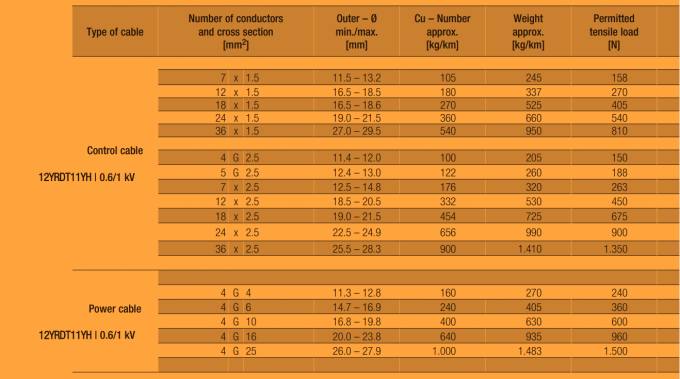


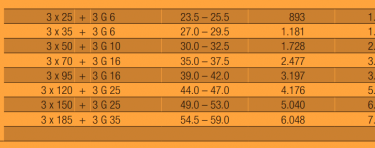

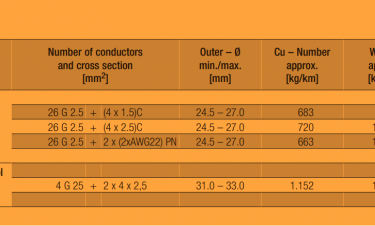
Certifications and Standards Compliance
International certification provides confidence in the Type 12YRDT11YH's design and manufacturing quality. IEC (International Electrotechnical Commission) standards establish global benchmarks for cable performance and safety, ensuring compatibility with international equipment standards. VDE (Verband der Elektrotechnik) certification adds European compliance credentials, particularly valuable for ports utilising European-manufactured cranes and handling equipment.
These certifications encompass both electrical performance parameters and mechanical characteristics essential for reeling service. Testing protocols verify flex life, abrasion resistance, chemical compatibility, and temperature performance under conditions representative of actual service environments. The comprehensive testing approach ensures that certified performance translates to real-world reliability.
Optional flame-retardant versions address specific port safety requirements where fire resistance takes priority. These variants incorporate halogen-free flame-retardant compounds that meet marine industry standards for enclosed spaces whilst maintaining the mechanical properties essential for reeling service. Signal core configurations enable integrated control and power solutions, reducing installation complexity in automated systems.
Australian industrial cable regulations align with international standards whilst addressing local environmental and safety concerns. The Type 12YRDT11YH's certification portfolio covers relevant Australian standards, ensuring compliance with local electrical codes and workplace safety requirements. This comprehensive approach simplifies specification and approval processes for Australian port projects.
Quality management systems supporting certification processes ensure consistent manufacturing standards and traceability throughout the supply chain. ISO 9001 quality certification provides additional assurance of manufacturing process control, whilst environmental management certifications address sustainability concerns increasingly important to port operators.
Common Cable Problems and Solutions
Q: Why do reeling cables fail prematurely in port applications?
A: Premature cable failure typically results from inadequate specification for the specific reeling environment. Common causes include insufficient bend radius capability, poor abrasion resistance, or incompatibility with chemical exposures. The Type 12YRDT11YH addresses these issues through its optimised bend radius performance, superior PUR sheath protection, and comprehensive chemical resistance.
Q: How does cable selection impact crane maintenance schedules?
A: Poor cable selection forces frequent replacement schedules that disrupt port operations and increase maintenance costs. Quality reeling cables like the Type 12YRDT11YH typically operate 3-5 years in demanding port applications versus 12-18 months for inferior alternatives. This extended service life allows maintenance planning around operational schedules rather than emergency responses.
Q: What specific advantages does PUR sheathing offer over traditional rubber compounds?
A: PUR provides superior abrasion resistance, broader temperature range capability, and excellent chemical compatibility compared to traditional rubber. In Australian port conditions, PUR maintains flexibility in cold morning temperatures whilst resisting degradation from intense UV exposure and salt spray. These properties ensure consistent performance across varying environmental conditions.
Q: How important is travel speed capability for modern port equipment?
A: Modern automated port systems increasingly operate at higher speeds to improve throughput. Cables rated for 80 m/min travel speeds accommodate current equipment whilst providing headroom for future upgrades. Insufficient speed rating leads to premature wear and potential safety hazards during high-speed operations.
Q: Can one cable type serve both random winding and monospiral reel applications?
A: Yes, the Type 12YRDT11YH's versatile design accommodates both reeling configurations effectively. Its balanced construction provides the flexibility needed for random winding systems whilst maintaining the structural integrity required for controlled monospiral applications. This versatility simplifies inventory management and reduces specification complexity.
Conclusion: Why Type 12YRDT11YH is Ideal for Port Cable Reeling Systems
The Type 12YRDT11YH reeling PUR rubber cable represents the optimal solution for Australian port reeling applications, combining proven performance characteristics with the reliability demanded by critical infrastructure operations. Its comprehensive design addresses the unique challenges of marine environments whilst delivering the flexibility and durability essential for continuous reeling service.
Port operators seeking to maximise equipment availability and minimise maintenance costs will find the Type 12YRDT11YH delivers exceptional value through extended service life and reduced failure rates. The cable's versatility across both random winding and monospiral reel configurations simplifies procurement and inventory management whilst ensuring consistent performance across diverse applications.
For port engineers and system integrators planning new installations or upgrading existing systems, the Type 12YRDT11YH offers the technical performance and certification credentials necessary for successful project execution. Its compliance with Australian standards and international certifications provides confidence in long-term reliability and regulatory compliance.
The investment in quality reeling cables pays dividends through reduced downtime, lower maintenance costs, and improved operational reliability. As Australian ports continue evolving toward higher automation and throughput levels, the Type 12YRDT11YH provides the robust foundation necessary for supporting these advanced systems.
Contact qualified cable suppliers for comprehensive technical datasheets and assistance with custom configurations tailored to specific port requirements. Professional cable selection ensures optimal performance and maximum return on investment for critical port infrastructure applications.
How to Reach Us
Get in Touch
SiteMap
Product Catalogue
Reeling Cable
Festoon Cable
Shore Power Cable




Scan to add us on WeChat
